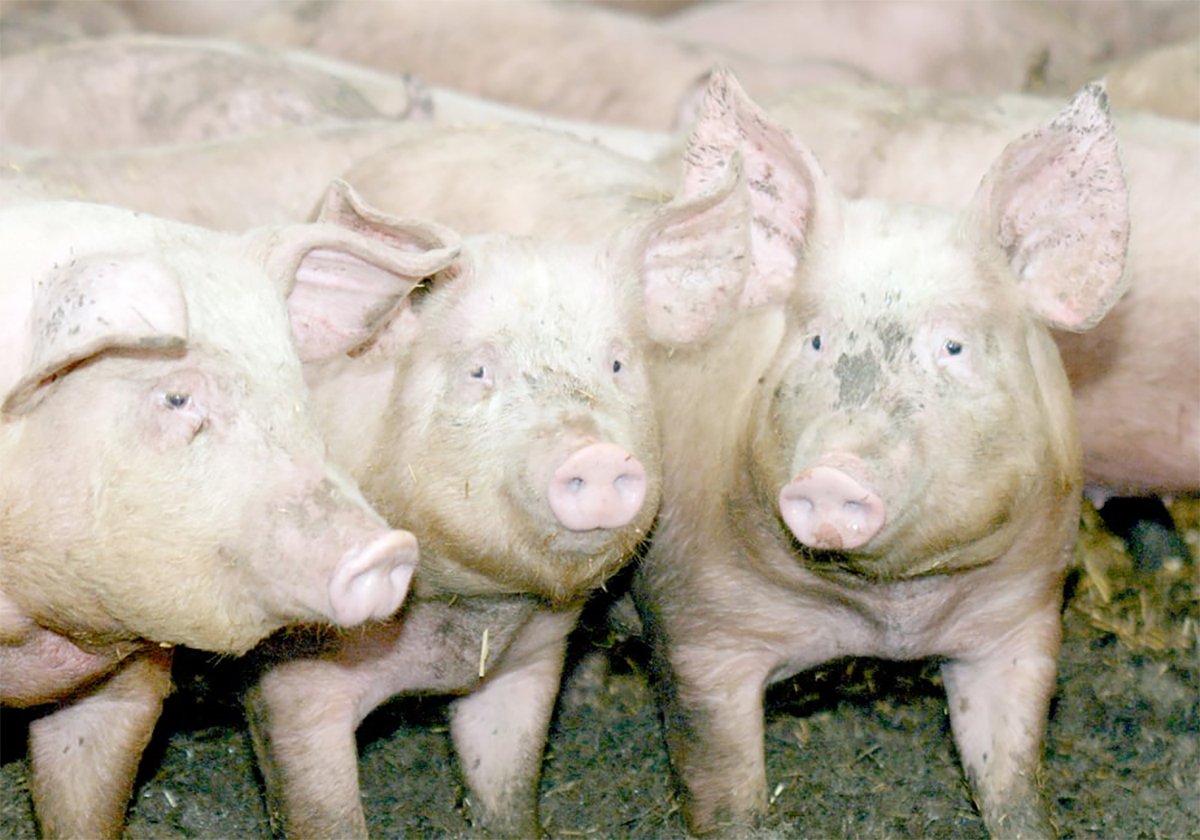A new study suggests that the long-standing practice of chopping poor quality forages more finely to aid cattle digestion may not be as beneficial as once thought.
Barry Yaremcio, who is leading the study at Lacombe, Alta., to measure feed loss when feeding cows during winter, said the data found that more good quality feed is wasted when the forage is finely chopped.
“Nobody knows what percentage is being lost in the snow,” he said.
In leftover feed researchers were able to measure, they found a disproportionate amount of quality feed was wasted. Seventy-five percent of the total weight of the leftover feed was finely chopped, good quality material. The rest was less nutritious coarse material.
Read Also

The Western Producer Livestock Report – October 2, 2025
Western Producer Livestock Report for October 2, 2025. See U.S. & Canadian hog prices, Canadian bison & lamb market data and sale insight.
“They (cattle) are losing about three times more of the good stuff compared to the long, coarse material.”
The ongoing study has completed only one year of testing, but in the first season it found considerable losses caused by how feed is processed and by cattle trampling and defecating on it.
Researchers measured feed losses in three different types of weather conditions chinook winds with crusty snow, fluffy snow and mucky conditions.
A group of 55 bred heifers were fed meadow brome hay that had been processed in a bale shredder.
“We are finding these bale shredders, no matter how they are set, be it very aggressive to get a very fine chop or less aggressive to just break it up and put it into a windrow, it is not making much of a difference for percentage fines and coarse material,” Yaremcio said.
The fines consist of leaves and smaller pieces containing high energy, protein and other nutrients. The coarse material consists mostly of less nutritious stems.
The fine particles are more likely to fall to the ground, where they are wasted. That means even though a producer’s hay might test high in protein and energy, the cattle are not likely getting the best parts with this type of ration, he said.
“Feed wastage is often greater than we anticipate,” said Yaremcio.
“It is an economic improver that we can cut costs in terms of the amount of feed we need per winter just by reducing feed wastage just by half.”
Alberta Agriculture, Alberta Beef Producers, the Western Forage Beef Group and Agriculture Canada are involved in the research. The first full results are expected this fall.
Producers are invited to complete surveys on feed production and processing, as well as feeding habits to broaden the scope of the study to across the province.
The research also involves field trials designed to evaluate the impact of bale processing on forage quality, feed intake, impact of ground feeding versus bunk feeding and the potential losses of all types of feed.
Next winter, the study includes high moisture silages, said Ken Zeigler of Alberta Agriculture.
“We kind of have an idea that we’ll find the same kind of results,” he said.
The questionnaires are available by calling 866-882-7677 or through the Alberta Agriculture website.

















